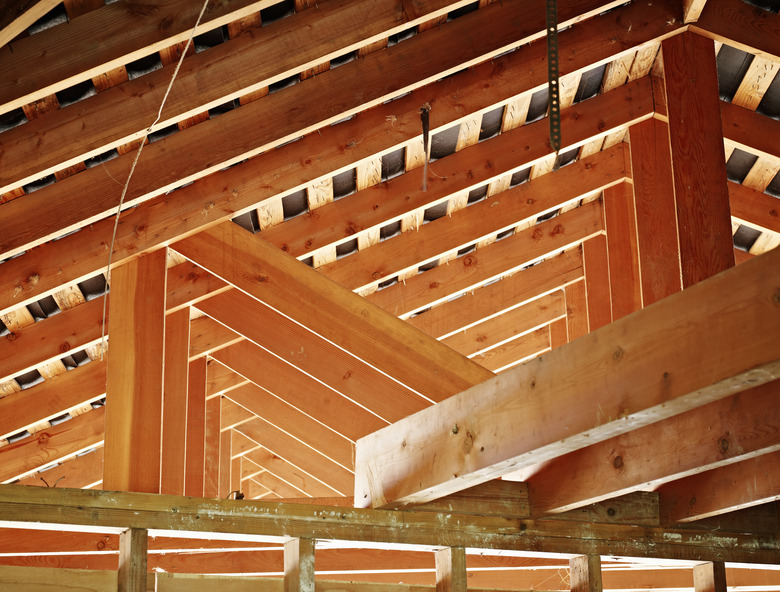What Is The Standard Spacing Of A Roof Rafter?
Rafter and roof joist spacing is only one part of a complex roof design that works together to form a structure that meets building codes and can hold up the weight of the roof and roof load. Builders aren't bound by standard rafter spacing measurements. But they do tend to space rafters in one of several industry-standard increments, typically either 12, 16 or 24 inches apart. These spacing intervals are measured "on center," meaning that the measurement is taken from the center of one rafter's horizontal surface to the center of the next rafter.
Effects of Rafter Spacing
Effects of Rafter Spacing
The spacing between rafters in a given building is part of the engineering calculations that determine the required structure of the roof. Other relevant factors include the type of wood being used for the rafters, the size of the rafters and the load that the rafters need to support. All of these factors taken together determine the maximum span of the rafters, a measurement that dictates how wide the building under the roof can be. All else being equal, decreasing rafter spacing increases the maximum rafter span.
For example, 2-by-6 rafters made from select structural grade Douglas fir that are required to support a live load of 20 pounds per square inch can have a maximum horizontal span of 11 feet 4 inches. Decreasing the distance between rafters to 12 inches, however, increases the maximum span to 14 feet 4 inches.
Truss Design Spacing
Truss Design Spacing
Engineered roof trusses are carefully designed structural assemblies that include roof rafters, which in truss designs are called top chords, and ceiling joists, which are called bottom chords, in one pre-fabricated unit. Trusses also include reinforcing members between the top and bottom chords to add strength to the truss. One goal of truss design is to build a roof structure that is as strong as necessary but that uses the minimum amount of lumber. Although the standard spacing of roof trusses may be the same as that of rafters, with 24-inch spacing being a common option, the design of a truss may allow for the use of a lower grade of lumber than would be required for rafters with comparable spacing and span.
Metal Roofs and Pole Buildings
Metal Roofs and Pole Buildings
Pole buildings with metal roofs are typically built with metal roofs resting directly on rafters and purlins, horizontal members that run between rafters and tie them together. Because this roof design doesn't have the added weight of plywood roof sheathing and metal roofs are generally lighter than asphalt-shingle roofs, the rafters have much less weight to bear than they would in a conventional design. So the space between rafters can be greater without reducing the maximum span.
The same concept holds true for roof trusses. Common spacing for trusses on this type of building is often between 2 and 4 feet, but trusses built with advanced designs may allow spacing as great as 8 or 12 feet.
